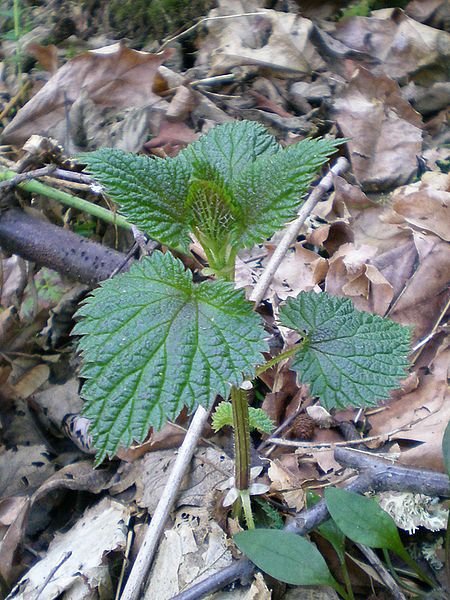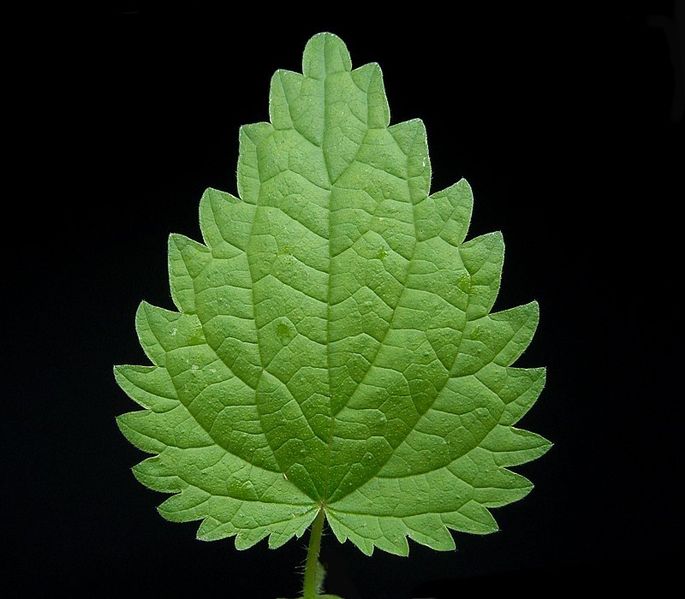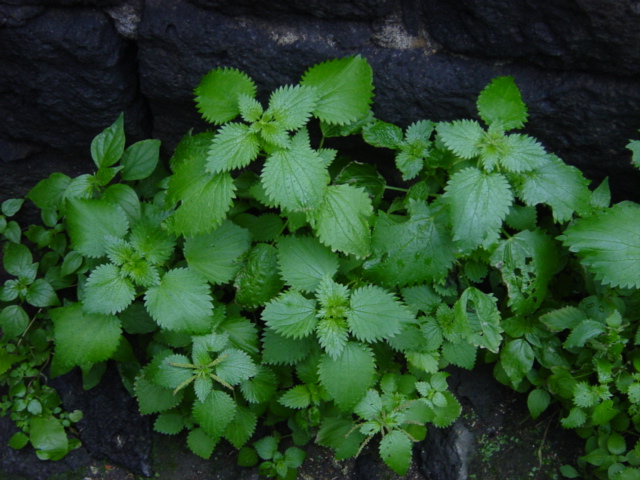Urtica what?? The Science Behind the Name
Urtica dioica is classified as:
|
Taxonomic Level |
Classification |
Reasoning Behind Classification |
|
Domain |
Eukarya |
Stinging nettles are classified as eukarya because they contain a true nucleus and membrane bound organelles. |
|
Kingdom |
Plantae |
They are in the kingdom plantae because they are photosynthetic, eukaryotic organism that shares a common freshwater algal ancestor with all other plants. |
|
Subkingdom |
Tracheobionta |
Stinging nettles are classified as tracheobionta because they contain vascular tissue such as xylem and phloem. |
|
Division/Phylum |
Magnoliophyta or Anthophyta |
They are in the division magnoliophyta, also known an anthophyta or angiosperm because stinging nettles are a flowering plant. |
|
Class |
Magnoliopsida |
Stinging nettles fall into the class magnoliopsida because they are dicotyledons meaning that the plants have: two cotyledons, net-like veins, vascular tissue arranged in a ring, a taproot (main root) with smaller roots branching off of it, pollen grains with three openings and floral organs in multiples of four or five. |
|
Order |
Urticales |
Stinging nettles are grouped into the order urticales because they have alternating leaves. |
|
Family |
Urticaceae |
They are in the urticaceae family because stinging nettles are members of the nettle family, in which the majority of the members have stinging hairs on their leaves and stems. |
|
Genus |
Urtica |
Stinging nettles fall into the genus Urtica because the plants are true nettles. |
|
Species |
Urtica
dioica |
The scientific species name of stinging nettles is Urtica dioica. In Latin, Urtica means “burn” and is a reference to the burning sensation that occurs when skin is brushed against the fine hairs of the plant. Dioica is Latin for “two houses” and refers to stinging nettles having plants of both male and female genders in reference to their flowers. Also, the English word nettle is derived from the Anglo-Saxon word “noedl” which means “needle”. |
 The
classification of Urtica
dioica which is stated above, can
be further displayed using a phylogenetic tree, below, which is based
on morphological features. The features that classify Urtica
dioica into the plant kingdom are the presence of chloroplasts,
which convert light energy
into chemical energy for the plant, which is stored as sugar and used
for the plant to feed. Plant cells also contain cell walls that are
made of cellulose and are used to support the plant. The characteristics
that classify Urtica dioica into the phylum of flowering
plants are its presence of vascular tissue, seeds and flowers.
Urtica dioica is placed into the class dicots because it posses
characteristics such as net-like veins, vascular tissue
arranged in a ring and a taproot with smaller roots branching off of
it. This plant falls into the order urticales because of the
alternating structure of the leaves. And finally, stinging nettles
fall into the family urticaceae which has about 2,600 species of
plants because they have common characteristics of the family that
include stinging hairs, alternating leaves and watery sap.
The
classification of Urtica
dioica which is stated above, can
be further displayed using a phylogenetic tree, below, which is based
on morphological features. The features that classify Urtica
dioica into the plant kingdom are the presence of chloroplasts,
which convert light energy
into chemical energy for the plant, which is stored as sugar and used
for the plant to feed. Plant cells also contain cell walls that are
made of cellulose and are used to support the plant. The characteristics
that classify Urtica dioica into the phylum of flowering
plants are its presence of vascular tissue, seeds and flowers.
Urtica dioica is placed into the class dicots because it posses
characteristics such as net-like veins, vascular tissue
arranged in a ring and a taproot with smaller roots branching off of
it. This plant falls into the order urticales because of the
alternating structure of the leaves. And finally, stinging nettles
fall into the family urticaceae which has about 2,600 species of
plants because they have common characteristics of the family that
include stinging hairs, alternating leaves and watery sap.
As shown in the table above, the classification of Urtica dioica can be furthered to the specific species. The phylogenetic tree below displays some of the closest relatives to the stinging nettle based on the DNA of its chloroplasts. Within the family urticaceae, which contains somewhere around 65 genera, stinging nettles fall into the tribe urticeae. From that tribe they are further divided into the genus Urtica which has around 40 species. Stinging nettles are then finally classified as the species Urtica dioica.
Next, learn where stinging nettles
grow.

